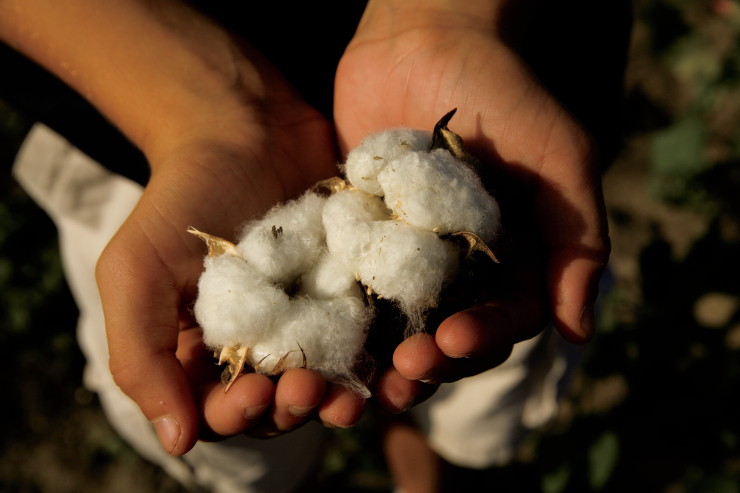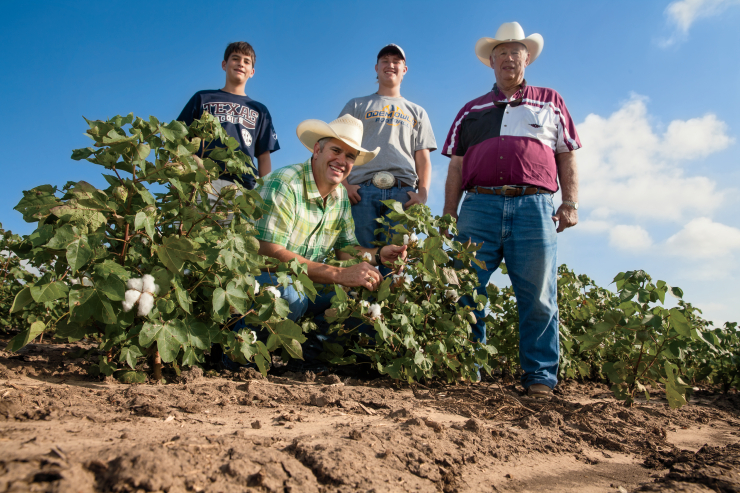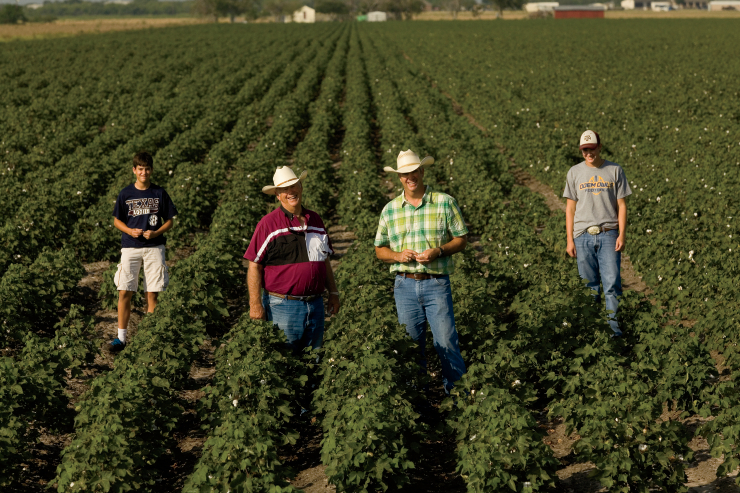Home > Texas > Texas Crops & Livestock > Cotton is a Texas Staple
Cotton is a Texas Staple
In partnership with: Texas Department of Agriculture

In Texas, the future of cotton isn’t about growing more, it’s about growing it better.
Texas is already the best in the nation at growing cotton, producing roughly one-third
of the U.S. cotton crop.
“Historically, East Texas was the primary cotton-producing region,” says Darren Hudson, director of the Cotton Economics Research Institute at Texas Tech University. “Cotton is still grown over there to some extent, but over time, cotton production has gravitated westward and to some extent southward. Cotton has always been, and still is, grown in the Coastal Bend and along the Upper Coast. But today, the High Plains is the big producer of cotton.”
The total economic impact of cotton in Texas is more than $24 billion, with approximately five million bales of cotton produced annually. Hudson says that figure won’t likely change in the future, but technology and biotechnology will continue to improve efficiencies and genetics.
“That means cotton is going to be a viable crop and one of the biggest cash crops we’re going to have in Texas,” he says.

Farming More Efficiently
Fourth-generation cotton farmer Jon Whatley says advancements in technology and biotechnology have already impacted his business.
“The biggest transition since I started farming has been the advent of technology allowing us to farm more efficiently and with less trouble,” Whatley says. “In the last 15 years, we’ve substantially changed how we operate. Biotechnology has allowed us to apply fewer chemicals and increase the health of the plant. We have newer varieties available that work better regionally, and that has increased our yields.”
Whatley’s cotton is grown on his 5,000-acre farm located in Odem, Texas.
“We have created a niche in the Coastal Bend region thanks to the quality of our cotton,” he says. “It matches some of the varieties grown in Arizona and California, but ours comes off a couple of months earlier, so we’re able to fill that market need.”

Cotton Industry’s Future
Whatley sees a bright future for the cotton industry.
“It’s a natural fiber, and that’s what people want,” he says. “Texas is going to benefit from the demand for cotton because we grow so much of it. The industry has its ups and downs, but it’s still thriving through technology and research.”
The supply chain from the farm to a department store is a complex world.
“A pair of jeans has about two pounds of cotton,” Hudson says. “It’s amazingly small, but from a margin perspective, it’s important. Farmers are always dealing with cost pressures, and technology helps with that by giving productivity gains.”

New Markets
Prior to the collapse of the textile industry, approximately 70 percent of the cotton produced in Texas was milled in the U.S.
Today, nearly all cotton produced in Texas goes into the global market. Market change resulted in a need to transform the product itself, says Dr. Dean Ethridge, managing director of the Fiber and Biopolymer Research Institute (FBRI) at Texas Tech University.
“The best cotton is going to be the longest, the strongest and the finest,” Ethridge says. “FBRI’s mission is to add value to cotton. One way of achieving that goal is the use of sophisticated instruments to measure fiber properties that are being bred into new seed lines.”
Hudson also notes that work at FBRI has changed the cotton industry in Texas and across the country.
“Research is developing drought-tolerant varieties,” Hudson says. “Biotechnology, technology and water management are the focus going forward. We’ve got challenges, but cotton has been a good thing for us in Texas, and it will continue to be a good thing. We have turned our attention to technology and management practices that will allow us to meet the production challenges ahead.”



